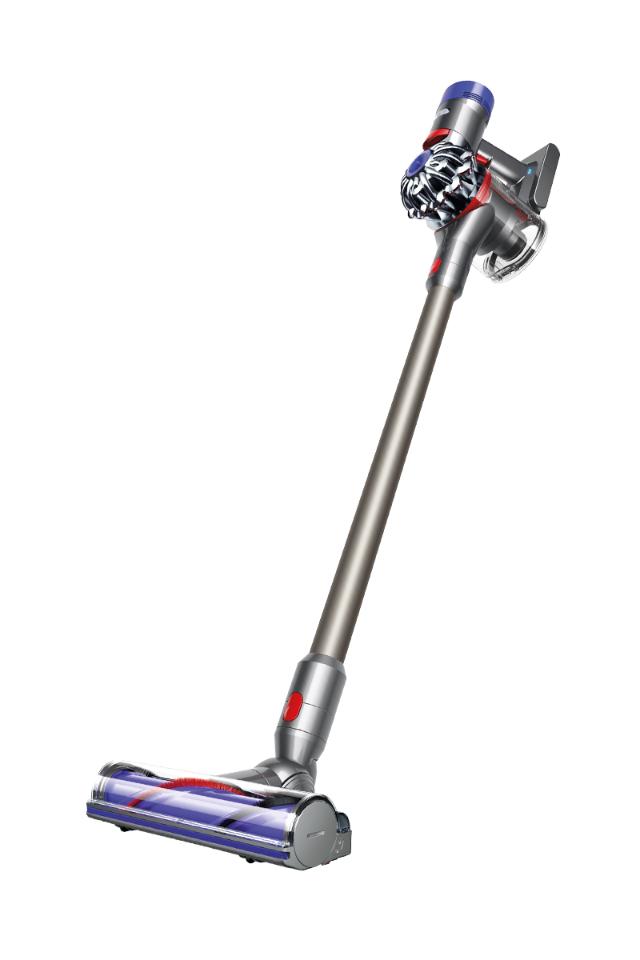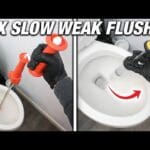Dyson cordless vacuums are popular for their efficiency. Yet, they can face issues.
Owning a Dyson cordless vacuum can be a game changer for your cleaning routine. They are known for their power and convenience. But, like all appliances, they can sometimes encounter problems. Whether it’s a loss of suction, a battery that won’t charge, or a brush bar that won’t spin, these issues can be frustrating.
This troubleshooting guide aims to help you quickly identify and fix common problems. With simple tips and solutions, you’ll have your Dyson cordless vacuum working like new in no time. Let’s dive into the common issues and their fixes.
Common Issues
Dyson cordless vacuum cleaners are known for their powerful suction and convenient design. Sometimes, they might face some common issues. Understanding these problems can help you fix them quickly. Let’s explore two common issues: Battery Problems and Loss of Suction.
Battery issues are a frequent concern with Dyson cordless vacuums. Here are some signs and solutions:
- Short Battery Life: If your vacuum runs out of charge quickly, the battery might be worn out. Consider replacing it with a new one.
- Not Charging: If the vacuum does not charge, check the charger and the charging port. Make sure the connections are clean and secure.
- Flashing Lights: A flashing light indicates a battery issue. Refer to the user manual to understand the specific error code.
Loss of suction can make cleaning less effective. Here are some possible causes and fixes:
- Clogged Filters: Dirty filters can block airflow. Clean or replace the filters regularly to maintain suction power.
- Blocked Brush Bar: Hair and debris can wrap around the brush bar. Remove the brush bar and clean it thoroughly.
- Full Dustbin: An overloaded dustbin can reduce suction. Empty the dustbin frequently to ensure optimal performance.
Regular maintenance can prevent many of these issues. Keep your Dyson cordless vacuum in top shape for the best cleaning results.
Battery Problems
Dyson cordless vacuum cleaners are powerful and convenient. But they can face battery problems. These issues can disrupt your cleaning routine. Understanding the battery problems can help you fix them quickly.
Checking The Battery
First, check if your vacuum is charging properly. Plug in the charger. Ensure the light indicator is on. If the light is off, the charger may be faulty. Try a different outlet or charger.
Next, inspect the battery itself. Look for any signs of damage. If the battery is swollen or leaking, it needs replacing. Also, check the connections. They should be clean and tight.
Sometimes, the battery might need a reset. Remove it from the vacuum. Wait for a few minutes. Reinsert the battery. This can solve minor issues.
Replacing The Battery
Replacing the battery is simple. First, purchase a compatible Dyson battery. Ensure it matches your vacuum model.
Turn off the vacuum. Remove the old battery by unscrewing it. Carefully take it out. Insert the new battery. Screw it in place securely.
Charge the new battery fully before using it. This ensures optimal performance. Your vacuum should now work efficiently.
Regularly check your battery’s health. Proper maintenance extends its life. Happy cleaning!
Loss Of Suction
Experiencing a loss of suction in your Dyson cordless vacuum cleaner can be frustrating. This issue can reduce cleaning efficiency and leave dirt behind. Understanding the causes can help you troubleshoot and fix the problem. Below, we will explore two common causes: clogged filters and blockages in the hose.
Filters play a crucial role in maintaining your vacuum’s suction power. If your vacuum loses suction, clogged filters might be to blame. Follow these steps to check and clean them:
- Turn off and unplug the vacuum.
- Remove the filter. Check the manual if you need help.
- Inspect the filter. Look for dust and debris.
- Rinse the filter under cold water. Do not use soap.
- Let the filter dry completely before reattaching it. This may take 24 hours.
Regular cleaning ensures your vacuum operates efficiently. Replace filters as recommended by the manufacturer.
Another cause of suction loss is blockages in the hose. Blockages can restrict airflow and reduce suction power. To check for and remove blockages:
- Turn off and unplug the vacuum.
- Detach the hose from the vacuum.
- Inspect the hose. Look for visible blockages.
- Use a flexible brush or a straightened coat hanger to remove debris.
- Reattach the hose and test the vacuum.
Keeping the hose clear of obstructions is vital for optimal performance. Regular maintenance can prevent future blockages.

Credit: www.youtube.com
Clogged Filters
Dyson cordless vacuum cleaners are powerful, but they need regular maintenance. One common issue is clogged filters. A clogged filter can reduce suction power. It can also affect the vacuum’s performance. Regular filter maintenance is essential for optimal performance.
Cleaning The Pre-filter
The pre-filter in your Dyson cordless vacuum cleaner captures larger debris. Over time, it can get clogged. Here’s how to clean it:
- Turn off and unplug the vacuum.
- Remove the vacuum’s bin. Locate the pre-filter.
- Gently pull out the pre-filter. It is usually blue.
- Rinse the pre-filter under cold water. Do not use soap.
- Squeeze out excess water. Do not twist.
- Let the pre-filter dry for at least 24 hours.
- Reinstall the dry pre-filter. Ensure it is fully dry.
Cleaning the pre-filter regularly keeps your vacuum running smoothly.
Replacing The Hepa Filter
The HEPA filter captures fine particles, like dust and allergens. It needs replacement over time:
- Turn off and unplug the vacuum.
- Locate the HEPA filter. Check your user manual if needed.
- Remove the old HEPA filter. Some models have a release button.
- Insert the new HEPA filter. Ensure it fits securely.
- Close any covers or compartments.
Replacing the HEPA filter ensures clean air in your home. It also helps your vacuum work efficiently.
Maintaining your Dyson cordless vacuum cleaner is simple. Regularly clean and replace filters. This ensures your vacuum performs at its best.
Blockages In The Hose
Experiencing blockages in the hose of your Dyson cordless vacuum cleaner can be frustrating. These blockages can reduce suction power, making cleaning less effective. Fortunately, resolving this issue is straightforward with a few simple steps.
Locating Blockages
To begin, check for blockages in the hose. Disconnect the hose from the vacuum cleaner. Ensure the vacuum is turned off and unplugged. Inspect the hose for visible debris or clogs. If you cannot see the blockage, use a flashlight.
Removing Obstructions
Once you locate the blockage, gently remove any obstructions. Use a long, flexible brush or a straightened coat hanger. Insert the tool into the hose and carefully push out the debris. Avoid using excessive force to prevent damage to the hose.
After removing the obstruction, reconnect the hose. Turn on the vacuum cleaner to check if the suction power has improved. If the suction is still weak, repeat the steps to ensure no debris remains.
Regularly checking for and removing blockages can help maintain your Dyson cordless vacuum cleaner’s performance. Keep your vacuum running smoothly with these simple troubleshooting steps.

Credit: www.dyson.com
Motor Malfunctions
The motor is the heart of your Dyson cordless vacuum cleaner. When it malfunctions, cleaning becomes a hassle. Common issues include overheating and strange noises. Addressing these problems is vital for your vacuum’s performance.
Overheating is a frequent motor issue. It can damage your vacuum cleaner. Here are the main causes:
- Blocked filters
- Clogged airways
- Extended use
Blocked filters reduce airflow. Clean or replace them regularly. Check the user manual for guidance.
Clogged airways can also cause overheating. Inspect the hose and brush bar. Remove any obstructions.
Extended use without breaks can overheat the motor. Use the vacuum for shorter periods. Allow it to cool down between sessions.
Strange noises indicate motor problems. Common sounds include:
- High-pitched whine
- Grinding
- Banging
High-pitched whine may mean a worn-out motor bearing. This requires professional repair.
Grinding often points to debris in the motor. Turn off the vacuum. Inspect and clean the motor area.
Banging sounds suggest loose components. Tighten any loose screws or parts. If the noise continues, contact customer service.
Overheating Issues
Dyson cordless vacuum cleaner troubleshooting involves addressing overheating issues. Clean the filters and check for blockages to prevent overheating. Ensure proper airflow to maintain optimal performance.
Dyson cordless vacuum cleaners are powerful and convenient. But they can sometimes overheat. This can cause the vacuum to stop working. If your Dyson cordless vacuum cleaner is overheating, there are steps you can take to fix it.
Cooling Down The Motor
First, turn off the vacuum and unplug it. Let it cool for at least 30 minutes. This gives the motor time to cool down. Check the filters. Dirty filters can block airflow and cause overheating. Clean or replace the filters if needed.
Next, inspect the brush bar. Remove any hair or debris wrapped around it. This can also cause the motor to overheat. Make sure the airways are clear. Blocked airways can prevent proper airflow, leading to overheating.
Preventing Overheating
Regular maintenance is key. Clean the filters every month. This ensures good airflow and prevents overheating. Check for blockages in the airways. Remove any debris that could block airflow.
Do not use the vacuum on wet surfaces. This can cause the motor to overwork and overheat. Avoid using the vacuum for long periods without breaks. Give it time to cool down between uses.
Store the vacuum in a cool, dry place. Heat and humidity can affect the motor. Follow these steps to keep your Dyson cordless vacuum cleaner working well.
“`
Strange Noises
Is your Dyson cordless vacuum cleaner making strange noises? This can be quite alarming. It might indicate a problem that needs fixing. Identifying and solving the issue can save you from costly repairs or replacements. Let’s dive into some common noise issues and how to troubleshoot them.
Identifying The Source
To fix the noise issue, you first need to identify the source. Strange noises can come from various parts of your vacuum cleaner. Here are some common areas to check:
- The Motor: Unusual sounds from the motor may suggest a serious issue.
- The Brush Bar: Debris stuck in the brush bar can cause rattling.
- The Filters: Clogged filters can create whistling or hissing noises.
- The Attachments: Loose attachments might rattle or vibrate.
Fixing The Problem
Once you identify the source, you can proceed to fix it. Below are steps to resolve common noise issues:
- Check the Motor: Turn off and unplug the vacuum. Inspect the motor for any visible damage. If you hear a grinding noise, the motor might need professional repair.
- Clean the Brush Bar: Remove the brush bar and clean out any hair, threads, or debris. This can often resolve rattling noises.
- Clear the Filters: Check the filters for blockages. Wash or replace them as necessary. Clean filters can reduce whistling or hissing sounds.
- Tighten Attachments: Ensure all attachments are securely fastened. Loose parts can cause unnecessary noise.
Regular maintenance can prevent most noise issues. Keep your vacuum cleaner clean and check for wear and tear frequently. This way, you ensure it operates smoothly and quietly.
Maintaining Your Dyson
Maintaining your Dyson cordless vacuum cleaner ensures its performance and longevity. Regular upkeep can prevent common issues and keep your device in top shape. Follow these simple steps to keep your vacuum running smoothly.
Regular Cleaning
Regular cleaning of your Dyson vacuum is essential. Empty the dustbin frequently to prevent clogs. Clean the filter at least once a month. Rinse it with cold water and let it dry for 24 hours. Check the brush bar for hair and debris. Remove any blockages to maintain strong suction.
Scheduled Servicing
Scheduled servicing helps your Dyson last longer. Take your vacuum for professional service once a year. This ensures all parts are functioning correctly. Technicians can spot hidden issues and fix them before they become big problems. Regular servicing keeps your vacuum working efficiently.

Credit: www.reddit.com
Frequently Asked Questions
Why Is My Dyson Cordless Vacuum Not Charging?
The battery might be depleted. Check if the charger is properly connected. Examine for any blockages or dirt.
How Do I Clean The Dyson Filter?
Remove the filter. Rinse under cold water. Let it air dry completely before reinstalling. Do this monthly.
Why Does My Dyson Vacuum Keep Stopping?
It could be a blockage. Check the brush bar and hose for debris. Clean them thoroughly.
How Often Should I Replace The Battery?
The battery lasts for years. Replace it if performance declines significantly. Usually after a few years of use.
What Should I Do If My Dyson Vacuum Loses Suction?
Check for clogs in the hose or brush bar. Clean the filter. Empty the dustbin regularly.
Conclusion
Troubleshooting your Dyson cordless vacuum can save time and money. Follow these steps for common problems. Check filters, battery, and blockages regularly. Maintenance keeps your vacuum running smoothly. Simple fixes often solve issues quickly. If problems persist, contact Dyson support.
Regular care ensures your vacuum lasts longer. Clean your vacuum often for best performance. Happy cleaning!




